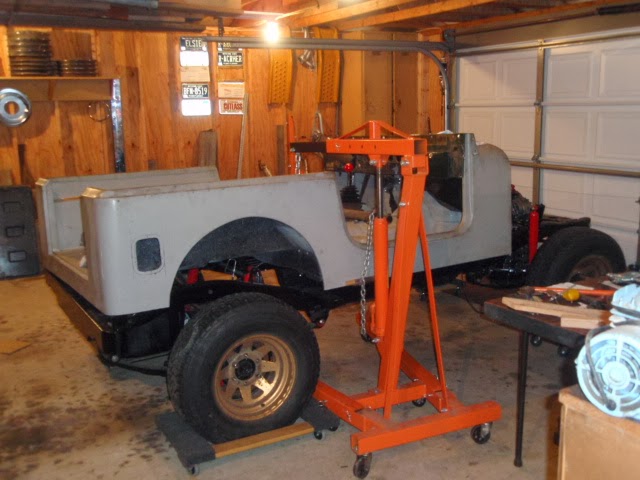Tying in the master cylinder to the distribution block was next on the agenda of things to do after body mounting. Brake lines had to be bent, so once again out came the brake tools. This should be the last time they will be used. It was decided to eliminate the vibration coils in the two lines for a cleaner look. Now I know I will be crucified for this, but I don't think there will be substantial flexing between the body and frame to produce any line breakage. There is already enough movement in the lines so we will take that chance. It is something we will keep our eyes on. Enough said. Bending was straight forward using 5/16 and 1/4 tubing. 4 foot lengths were
purchased and one end cut off and re-flared after appropriate length was established. A double flaring tool was used to accomplish this. Mine is made by Oldforge, model 7203 http://www.etoolpros.com/automotive-tools/OLF-7203.html?gclid=CKqjtM-HzbwCFbB9Ogodi14AiA These can be picked up from various sources but don't by a dime store quality. Alot of forums I have read, indicated trouble in producing an centered double flare. The trick is in evenly chamfering the O.D. and I.D. Then when you insert the button in the tubing for the first bending operation it is critical that it is centered and straight. Look from both sides to insure this. It is also imperative that the screw clamp is centered on the holding bar. If it is not you will end up with an off centered flare. I also hit it with some WD-40 on both sides of the button for a smooth bend. On the second operation again make sure the screw clamp is centered. Oh and don't forget to put the fitting on first. It is also recommended that you should tighten the fitting down, loosen it and retighten for a no leak seal. Silicone brake fluid will be used for it's undamaging to paint properties.
purchased and one end cut off and re-flared after appropriate length was established. A double flaring tool was used to accomplish this. Mine is made by Oldforge, model 7203 http://www.etoolpros.com/automotive-tools/OLF-7203.html?gclid=CKqjtM-HzbwCFbB9Ogodi14AiA These can be picked up from various sources but don't by a dime store quality. Alot of forums I have read, indicated trouble in producing an centered double flare. The trick is in evenly chamfering the O.D. and I.D. Then when you insert the button in the tubing for the first bending operation it is critical that it is centered and straight. Look from both sides to insure this. It is also imperative that the screw clamp is centered on the holding bar. If it is not you will end up with an off centered flare. I also hit it with some WD-40 on both sides of the button for a smooth bend. On the second operation again make sure the screw clamp is centered. Oh and don't forget to put the fitting on first. It is also recommended that you should tighten the fitting down, loosen it and retighten for a no leak seal. Silicone brake fluid will be used for it's undamaging to paint properties.











